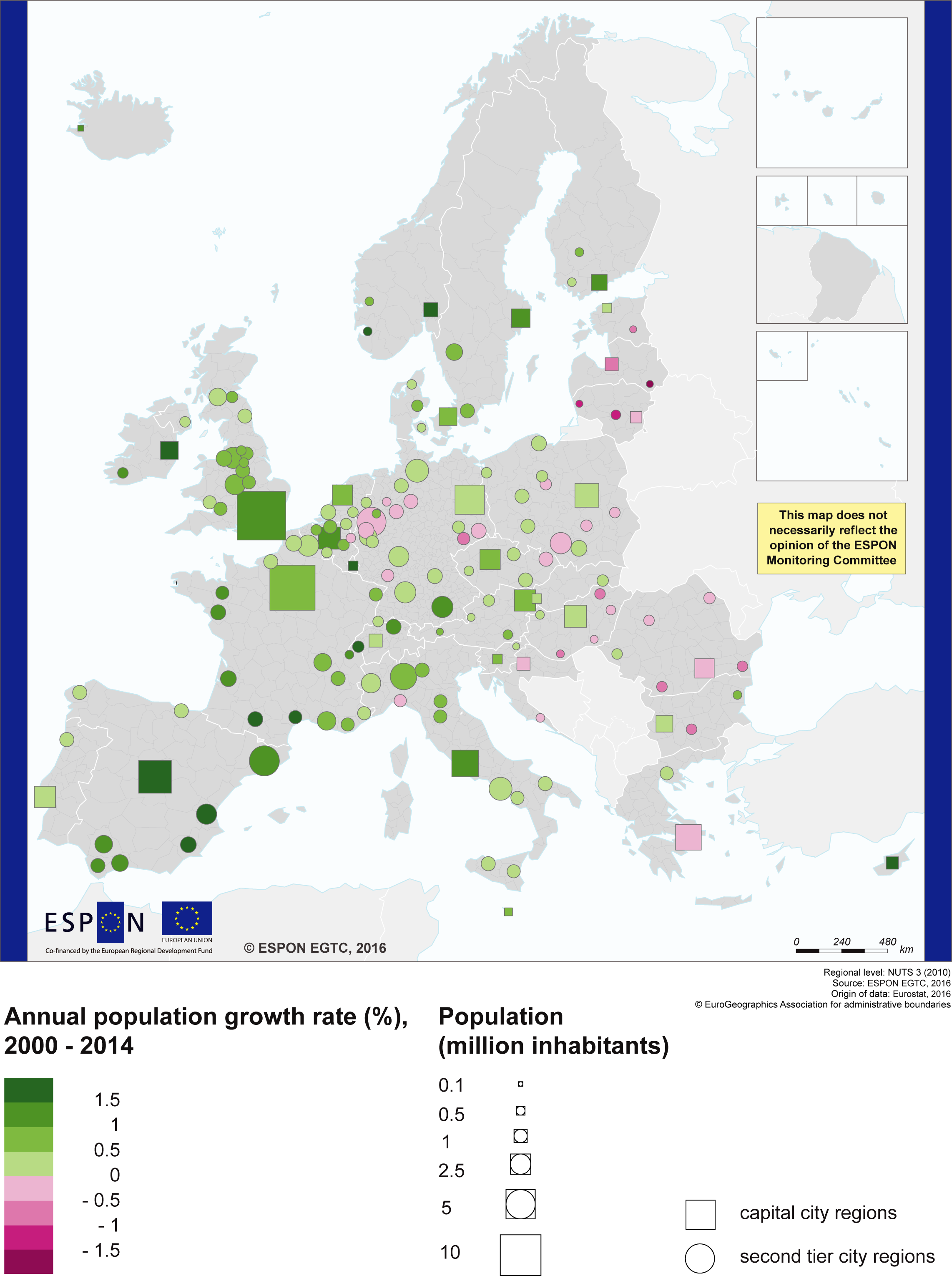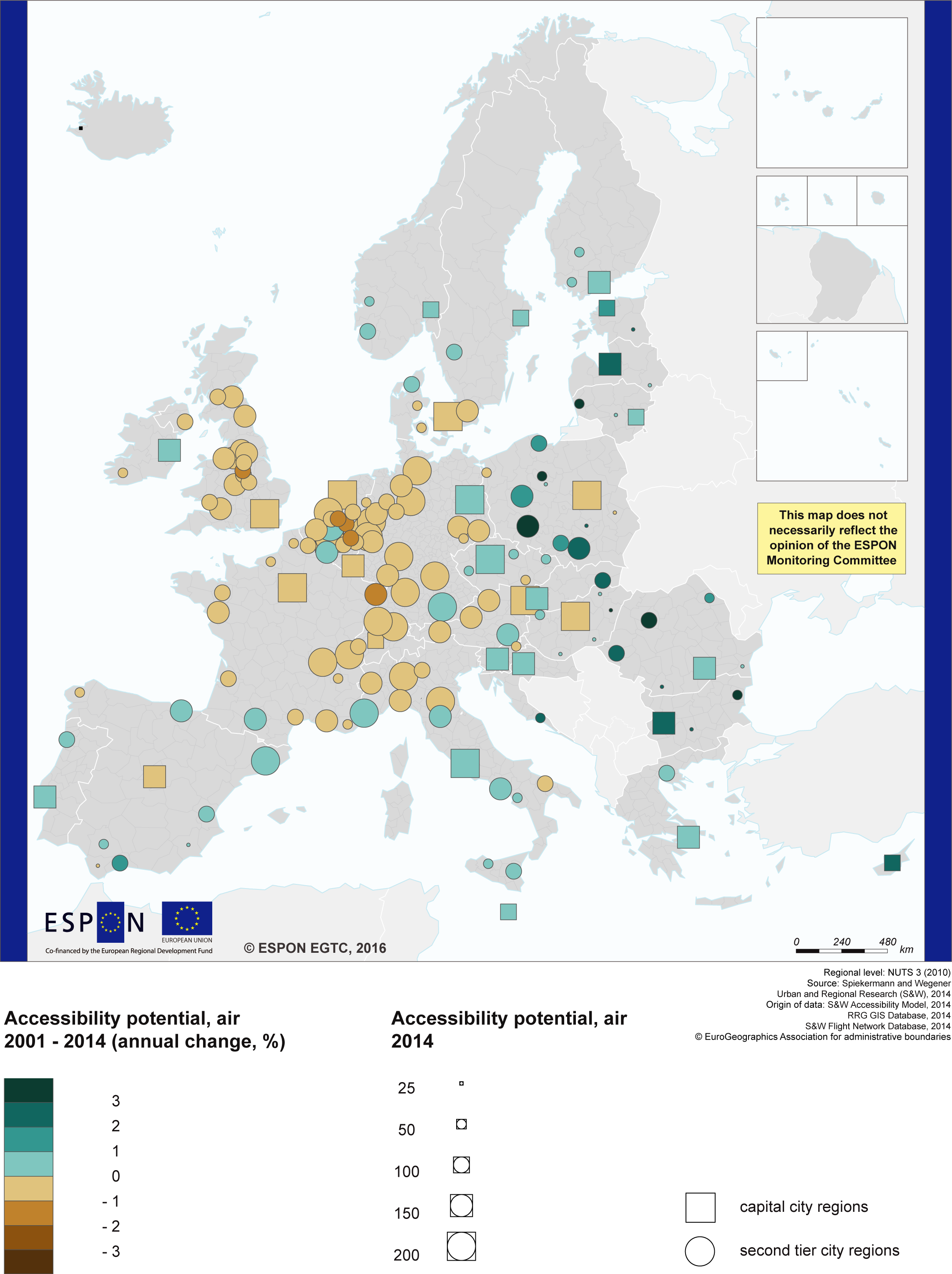Second Tier Cities Matter
Population growth in European capital and second tier metro regions, 2000-2014 (left image);
Potential accessibility of European capitals and second tier cities by air, 2001-2014 (right image)
July 2016 - More than ever, cities today need to reinforce smart, sustainable and inclusive growth, while managing e.g. demographic change, housing, urban mobility, energy transition, all in a context of scarce public but also private resources. They function as nodes of development and contribute decisively to local, regional, national and European economic growth.
Evidence has shown that a greater distribution of investments within countries is associated with stronger economic performance of their second tier cities. Consequently, a more resilient and polycentric development of the European urban fabric can be achieved by strengthening second tier cities, and by promoting a more networked development of the system of European cities at regional, national and European level. It is therefore important for policy makers to keep in mind the significance of strong second tier cities for economic growth and jobs as well as for polycentric and cohesive territorial development.
Key messages for policy consideration
- Several European second tier cities fared better than their capitals throughout the economic crisis. Their economies grew quicker, their population is often growing and highly educated, and they improved their accessibility.
- Second tier cities differ and therefore require tailor-made, place-based policy development, taking into account their national and regional context, their location in the European territory, accessibility, availability of well-educated human capital and governance structure.
- Policies and investments should promote development in Europe’s second tier cities to support a balanced polycentric urban system and territorial cohesion in Europe. This is particularly important in countries where capital cities still strongly dominate the national economy.
- The smaller the socio-economic difference between second tier cities and the capital, the more successful national economies will be and the better second tier cities will perform.
- Accessibility improvements for second tier cities often imply investments in secondary transport networks. However, an improved accessibility potential is no guarantee for positive economic and demographic development. It needs to be accompanied by other development measures.
- Regional airports can in certain circumstances improve the development potential of second tier cities with low accessibility by air. However, air connections are more vulnerable since private flight operators change destinations more rapidly than operators using rail or road.
- Since a growing number of jobs will require tertiary level education, access to higher education, eventually with a focus on the locally prevailing economic structure, should be further improved for second tier cities so that they can continue attracting young people.
- Governance, institutional capacity and cooperation of stakeholders across all levels of governance play an important role for second tier cities to further thrive.










